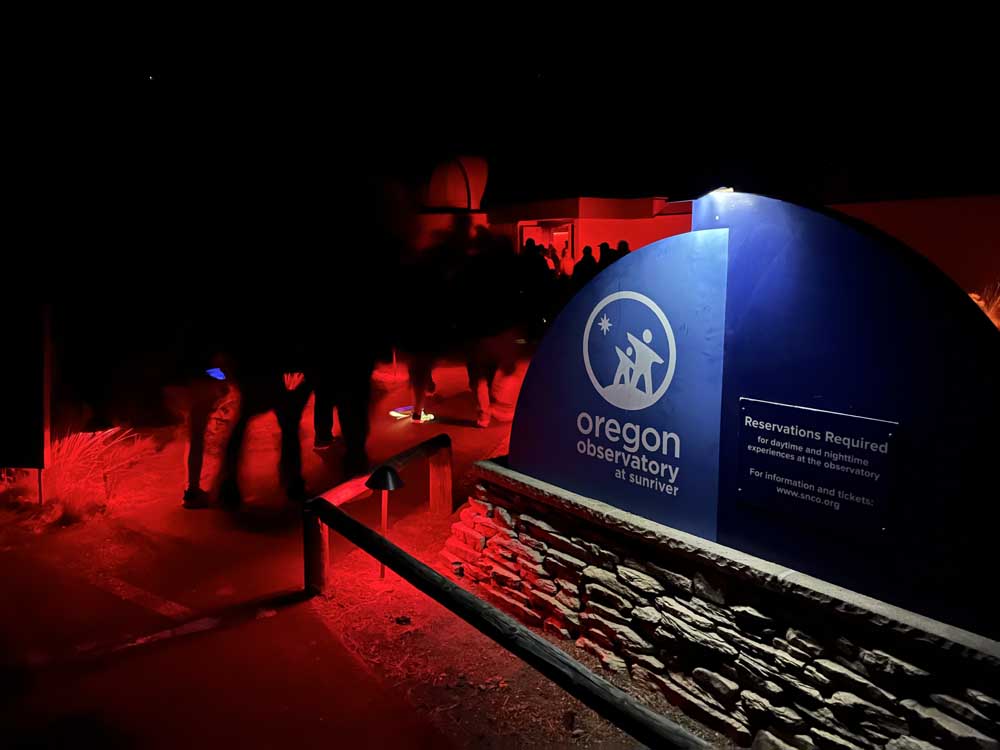Embark on a stargazing adventure at Sunriver’s observatory
Published 6:00 am Friday, October 11, 2024

- Reservations are required to visit the observatory at Sunriver.
I peered into the telescope’s eyepiece and saw a bright gleaming ball with rings in the night sky.
Saturn, named for the Roman god of agriculture and wealth, was easily visible from Sunriver Nature Center’s observatory on Saturday, along with constellations, nebulae and star clusters.
The planet is positioned high in the sky and is currently a highlight of the observatory program, said Cade Freels, the center’s observatory specialist.
Sunriver’s observatory claims to have the largest collection of telescopes for public viewing in the United States, where it hosts nighttime observatory visits multiple nights per week.
Upon arriving at the observatory last week, I checked in at a glowing red podium in the parking lot. I was handed a small purple glow stick and instructed to attach it at waist level or below, such as on a belt loop or shoelace. I affixed it to my shoe.
The glow stick would come in handy later, while navigating the observatory in the dark.
First, Freels armed participants with information through a presentation on the solar system’s moons in the observatory’s outdoor amphitheater. Then, participants were invited to walk through the observatory and its multiple rooms of telescopes.
More Coverage: A guide to Oregon stargazing
An October’s night sky
At the observatory, each telescope was fixed on a different object, optimized for the equipment’s specific lenses, mirrors and size.
The Yakum 20 telescope, located inside the observatory’s dome, was pointed at the Hercules Globular Cluster, which sits on the edge of the Milky Way galaxy. It’s believed to contain between 300,000 and 1 million stars, situated 25,000 light years from Earth, according to the observatory’s Night Sky News.
The Hercules cluster is known to appear as a pile of spilled glitter when viewed through a telescope.
Also viewable through the telescopes last weekend was the Swan Nebula, which is known by the more technical term of M17. According to the Night Sky News, the nebula is located in the Sagittarius constellation and is one of the brightest and largest star-forming regions in our galaxy.
Another telescope was pointed at the Andromeda Galaxy (or M31). At approximately 1 trillion stars, this galaxy contains more than twice as many as the Milky Way.
Charting the cosmos
Sunriver’s observatory offers viewing opportunities year-round, providing an opportunity to view different parts of the galaxy throughout the year.
It also hosts solar viewing of the sun during the facility’s daytime hours, made possible by a hydrogen-alpha filter that colors the massive star red, Freels said. The specialized filter allows visitors to see solar activity such as prominences jutting out from the edges of the sun’s surface.
Even without the aid of telescopes, Sunriver’s night sky offers an extraordinary view of the stars. In 2020, it was formally designated as a Dark Sky Friendly Development of Distinction by the International Dark Sky Association.
More Coverage: Sunriver’s dark skies gain international recognition
Through his role at the observatory, Freels regularly points out phenomena in the night sky to guests, such as the Milky Way and shooting stars.
“One thing I’ve noticed in the two years I’ve been here is the excitement and appreciation that a lot of our guests have when they look at the night sky, maybe not even through the telescopes, but just being somewhere where the sky gets so dark,” he said.
If You Go
What: Observatory Nighttime Visits
When: 8-10 p.m. Wednesdays and Saturdays and 8-9 p.m., 9:15-10:15 p.m. Thursdays in October. Events are held year-round, but will shift to an earlier time slot in November.
Where: Sunriver Nature Center & Observatory, 57245 River Road, Sunriver
Cost: $22-$35
Contact: snco.org






